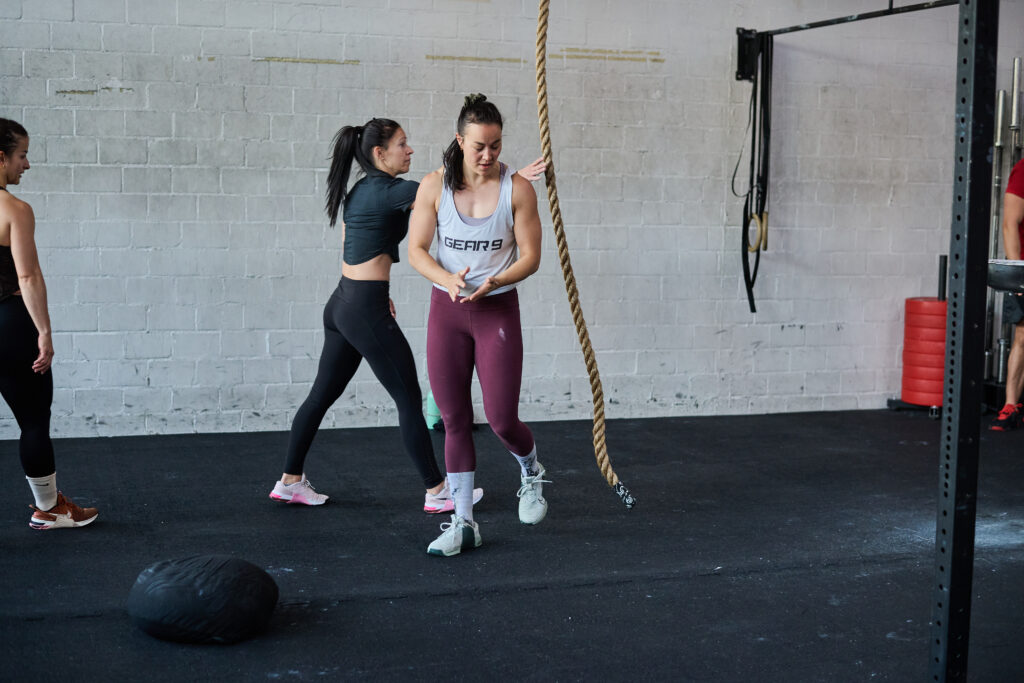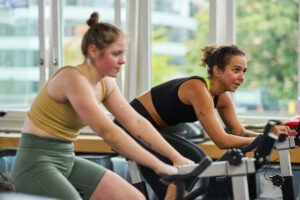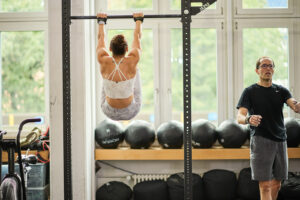
Looking fit vs. being fit is one of the biggest misconceptions in health and training. Walk into any gym, scroll through Instagram, or flip open a magazine, and you’ll see plenty of people who look fit. Visible abs, muscular arms, lean physiques—they all signal fitness to the eye. But here’s the truth: looking fit and being fit are not the same thing.
Yes, on a population level there is some correlation—if you move often, train hard, and take care of yourself, chances are you’ll also look healthy. But at the level of the individual, looks don’t tell the full story. A six-pack doesn’t guarantee performance, longevity, or resilience. True fitness is measured by what you can do, not just how you appear.
What does being fit really mean?
At CrossFit Kreis 9, we see this every day. Fitness is about increased work capacity across broad time, modal, and age domains—a definition that captures how well you can perform in different tasks, over different time frames, and at every stage of life.
This is the heart of the looking fit vs. being fit discussion. Being fit isn’t about specializing in one skill or looking good in the mirror. It’s about preparing your body to handle whatever life throws at you—whether that’s sprinting for the train, lifting heavy groceries, skiing on the weekend, or simply staying active and capable well into your later years.
We’ve seen members join us with the initial goal of “toning up” or “losing weight.” Often, their first source of motivation is how they look in the mirror. But within months, the conversation shifts: they’re celebrating their first pull-up, their improved endurance on a hike, or the fact that daily tasks feel easier. That’s when they realize that being fit has transformed their quality of life in ways that looks alone never could.
The 10 general physical skills
To understand the difference between looking fit vs. being fit, we use the 10 general physical skills as our benchmark:
- Cardiovascular/respiratory endurance – The ability of the body’s systems to gather, process, and deliver oxygen.
- Stamina – The ability to process, deliver, store, and utilize energy.
- Strength – The ability of muscles to apply force.
- Flexibility – The ability to maximize range of motion at a joint.
- Power – The ability to apply maximum force in minimum time.
- Speed – The ability to minimize the cycle time of a repeated movement.
- Coordination – The ability to combine distinct movement patterns into a single action.
- Agility – The ability to quickly transition between movement patterns.
- Balance – The ability to control your center of gravity relative to your support base.
- Accuracy – The ability to control movement in a specific direction or intensity.
Our coaching team works to develop all ten skills across group classes, personal training, and individual goal reviews. Why? Because if one of these areas is missing, fitness is incomplete. Someone may look strong but lack stamina. Another might look lean but struggle with coordination or balance. Real fitness is about building capability across the board, not specializing in a single domain.
As an exception to this rule are of course people who use our services to excel in a specialised sport outside of the gym. If the goal is to run a 3 hour marathon some domains need to be considered as non-priority. But for most of the general population this is a phase, not a life long path.
Why looking fit vs. being fit matters
Looking fit is a snapshot. Being fit is a spectrum. Looking fit might get you attention today, but being fit will allow you to live a longer, fuller, more capable life.
That said, we also recognize that looking fit can be a powerful source of motivation. For many of our members, visible changes in body composition are the first signs of progress—and that can be incredibly rewarding. It’s a tangible reminder that the work in the gym is paying off. But what keeps people training for years is discovering what their body can do. Running faster, lifting heavier, moving with control, or simply feeling energized day after day.
At CrossFit Kreis 9, we combine the two: the motivation of looking fit with the lifelong benefits of being fit. We measure progress not just in the mirror, but in increased work capacity, improved skills, and the confidence that comes from knowing you’re ready for whatever life throws at you.
Our experience has shown that the members who thrive long-term are not the ones who only chase aesthetics, but the ones who embrace the broader journey of developing all ten physical skills. They’re the ones who notice how training carries over into skiing holidays, playing with their kids, or maintaining independence as they age. That’s the real reward of fitness.
At the end of the day, the looking fit vs. being fit debate comes down to this: fitness isn’t measured in the mirror. It’s measured in your ability to move, adapt, and thrive—today, tomorrow, and decades from now.




